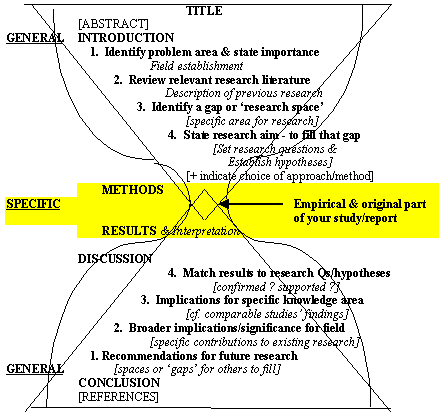Methods
and Results :
what they have in common
Methods
and Results : |
Methods and Results in a study have 2 major things in common.
At the level of research, they are the parts devoted to your own empirical or original research. This is where you focus on what you do and what you find – in your own study. As you recall, from our hourglass diagram, the Introduction (incl. the Literature Review) and Discussion sections of a report are the wider perspective you take on your study, placing it in the context of theories and studies written about elsewhere.
At the level of reporting, they have in common the fact that you focus on writing about what you did and what you found.
In the Methods section you are expected to tell the reader what you did - your methodology, both for collection and analysis - and who (plus when and where) you did it with or to - i.e. your survey population. As you report all this, the dominant tense is the past tense.
In the Results section, you report what you found – what people said, what they did and what they reported they did – in the past tense. As we suggest next week, you also go on to interpret your findings in the Results section - otherwise the reader would get very bored!
A functional
analysis of a Research Report:
the empirical "core" of Methods & Results
